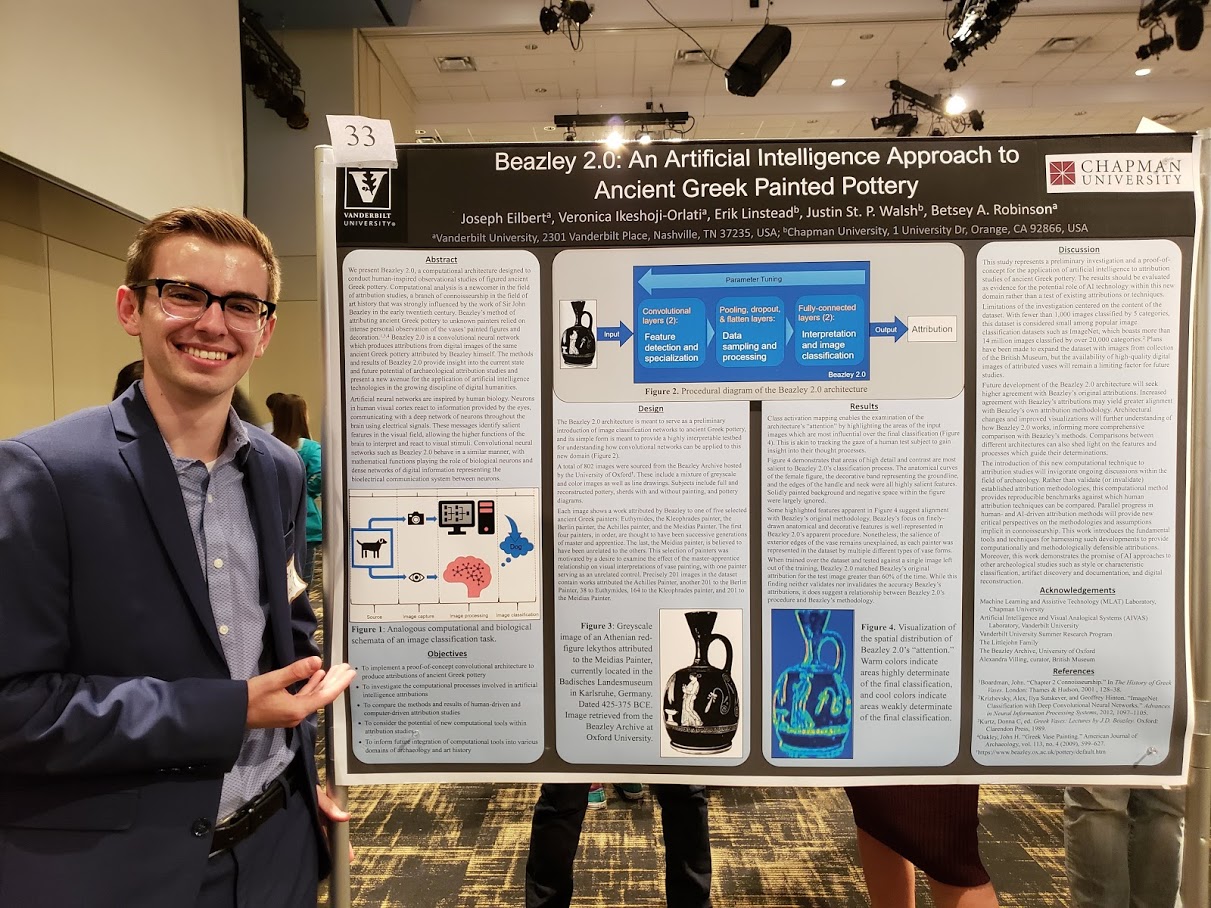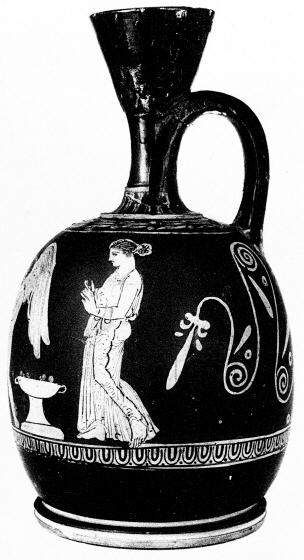Home » Digital Humanities » Joseph Eilbert Receives Award at Vanderbilt Undergraduate Research Fair
Joseph Eilbert Receives Award at Vanderbilt Undergraduate Research Fair
Posted by vrcvanderbilt on Tuesday, October 30, 2018 in Digital Humanities, Events, HART, News, Student/Alumni, Vanderbilt University, VRC.
The Department of History of Art proudly congratulates Joseph Eilbert ’19 (physics and history of art), who was one of four students recognized for their exceptional posters and presentations at the fifth annual Vanderbilt Undergraduate Research Fair held September 27 at the Student Life Center. A record 167 students shared their research projects in a campus-wide celebration of undergraduate student research sponsored by the Office of Immersion Resources, the Vanderbilt Undergraduate Summer Research Program (VUSRP), and the Littlejohn Family.
 Eilbert presented Beazley 2.0: An Artificial Intelligence Approach to Ancient Greek Painted Pottery. His faculty mentor was Betsey Robinson, acting chair and associate professor of history of art. Eilbert described his summer research project, supported by VUSRP and a Littlejohn Fellowship, as “a rich, interdisciplinary collaboration” with Robinson, Vanderbilt postdoctoral fellow Veronica Ikeshoji-Orlati, and two professors at Chapman University, computer scientist Erik Linstead and archaeologist and Vanderbilt alumnus Justin Walsh. Also this summer Eilbert traveled to London and the British Museum to meet with Alexandra Villing, curator, Greek pottery and terracotta figurines, regarding their collection and on to Oxford where he discussed his project with world-class digital humanities experts.
Eilbert presented Beazley 2.0: An Artificial Intelligence Approach to Ancient Greek Painted Pottery. His faculty mentor was Betsey Robinson, acting chair and associate professor of history of art. Eilbert described his summer research project, supported by VUSRP and a Littlejohn Fellowship, as “a rich, interdisciplinary collaboration” with Robinson, Vanderbilt postdoctoral fellow Veronica Ikeshoji-Orlati, and two professors at Chapman University, computer scientist Erik Linstead and archaeologist and Vanderbilt alumnus Justin Walsh. Also this summer Eilbert traveled to London and the British Museum to meet with Alexandra Villing, curator, Greek pottery and terracotta figurines, regarding their collection and on to Oxford where he discussed his project with world-class digital humanities experts.
More than a century after British archaeologist Sir John Beazley developed his connoisseurship approach to attributing vases to painters and potters, “new technologies are enabling another method which Beazley himself never could have imagined,” said Eilbert, whose paper presents a comparision of Beazley’s method with a novel method driven by artificial intelligence (AI). Having previously worked in an AI lab at the Engineering School, Eilbert has a certain familiarity with AI that has proved invaluable to his project. He views visual artificial intelligence as a “new voice and useful tool” in the field of attribution studies, hoping to dispel any misconceptions about the goal of his project—“not to overturn attributions but rather to improve the role of the human.”
 Eilbert has developed an artificial intelligence approach to archaeological attribution studies of ancient Greek painted pottery. Essentially, he has been “teaching” a smart computer program to group hundreds of unsigned painted pots into categories based on the style and intricacies of their painting.
Eilbert has developed an artificial intelligence approach to archaeological attribution studies of ancient Greek painted pottery. Essentially, he has been “teaching” a smart computer program to group hundreds of unsigned painted pots into categories based on the style and intricacies of their painting.
“Highly trained people do this same task, grouping unsigned artworks based on stylistic details to attribute them to certain artists. Comparing the groups produced by the AI with groupings produced by human connoisseurs of ancient Greek pottery, I have been able to examine the methodology of those human attributions in a whole new light. Attribution studies is a hot topic among archaeologists and art historians, and this project’s use of cutting-edge technology truly makes it stand out.”
Beazley 2.0 is a computational architecture designed to conduct human-inspired observational studies of figured ancient Greek pottery. Computational analysis is a newcomer in the field of attribution studies. Beazley’s method of attributing ancient Greek pottery to unknown painters relied on intense personal observation of the vases’ painted figures and decoration.
“The methods and results of Beazley 2.0 provide insight into the current state and future potential of archaeological attribution studies and present a new avenue for the application of artificial intelligence technologies in the growing discipline of digital humanities,” said Eilbert, who will present his work under the title Beazley 2.0: An Artificial Intelligence Approach to Attribution Studies at the 120th annual meeting of the Archaeological Institute of America (AIA) to be held January 3-6 in San Diego.
*Joe Eilbert with his award-winning poster at Vanderbilt’s Undergraduate Research Fair; red-figure lekythos decorated by the Meidias Painter (fl. ca. 420-400 BCE).

©2025 Vanderbilt University ·
Site Development: University Web Communications